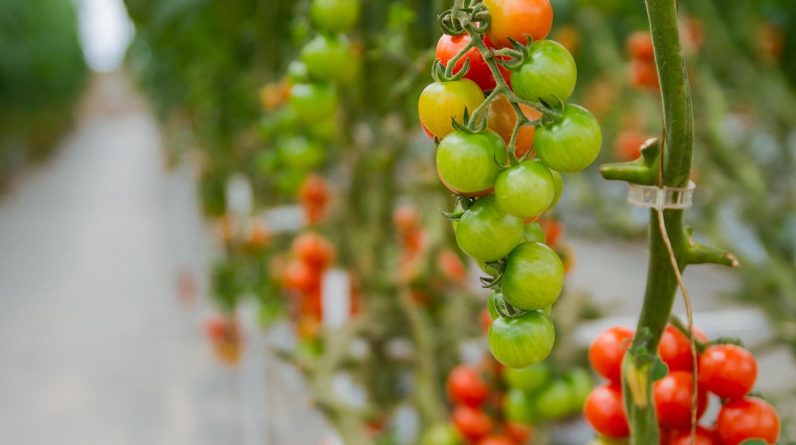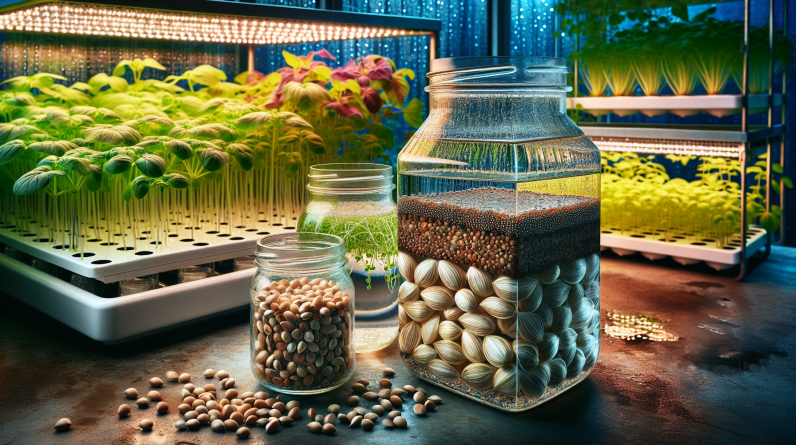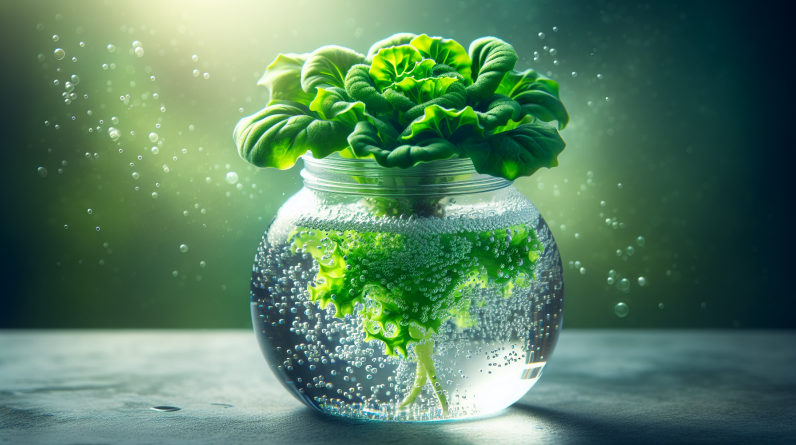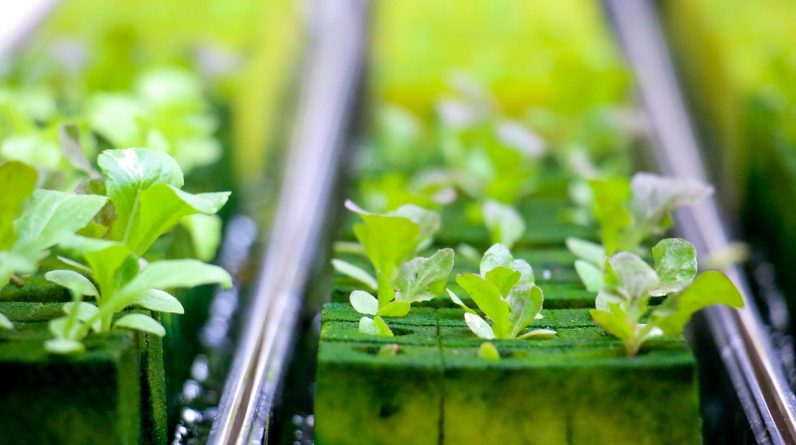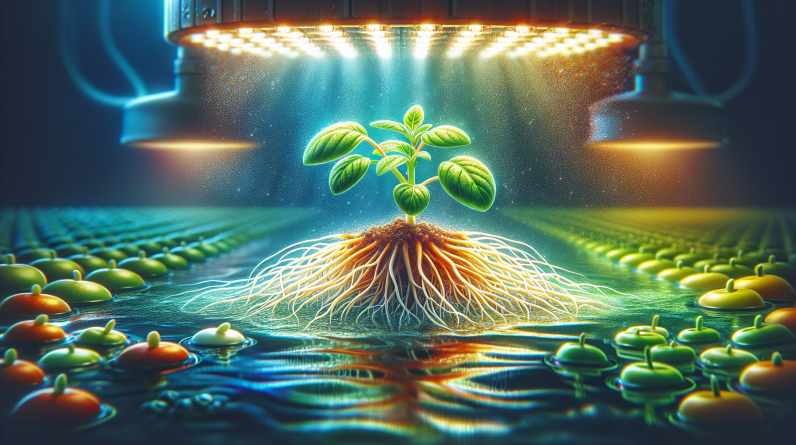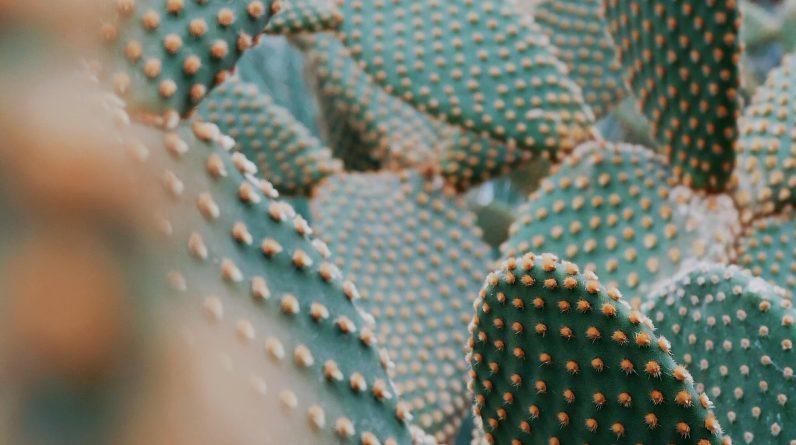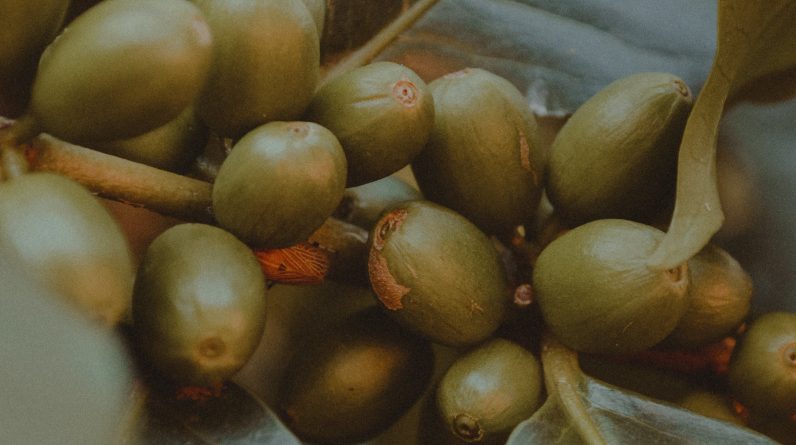
Imagine if there was a secret ingredient that could magically accelerate the growth of plants, transforming your garden into an enchanted oasis. Well, wonder no more, because there is indeed an item that has the power to make plants grow faster. This article will unveil this incredible solution, revealing how it works and the astonishing results it can bring to your plant kingdom. Get ready to unlock the secrets of accelerated plant growth and watch your garden thrive like never before.

This image is property of images.pexels.com.
Nutrients
Importance of Nutrients for Plant Growth
Nutrients are vital for the growth and development of plants. These essential substances provide the necessary energy and building blocks for plants to carry out vital processes such as photosynthesis, respiration, and reproduction. Without an adequate supply of nutrients, plants may suffer from stunted growth, yellowing leaves, and reduced overall health.
Essential Nutrients for Plants
Plants require a variety of essential nutrients to thrive. These nutrients can be broadly categorized into two groups: macronutrients and micronutrients. Macronutrients, including nitrogen (N), phosphorus (P), and potassium (K), are needed in larger quantities, while micronutrients, such as iron (Fe), zinc (Zn), and manganese (Mn), are required in smaller amounts.
Nitrogen is crucial for leaf and stem development, phosphorus promotes root growth and enhances flowering, and potassium aids in overall plant health and disease resistance. Other essential macronutrients include calcium, magnesium, and sulfur, while micronutrients such as copper and boron contribute to specific enzyme functions and metabolic processes.
Organic vs Inorganic Fertilizers
Fertilizers are commonly used to provide plants with an extra boost of nutrients. Organic fertilizers are derived from natural sources such as compost, manure, and bone meal. These fertilizers release nutrients slowly, providing a steady supply of nourishment to plants over time. Organic fertilizers also improve soil structure, moisture retention, and promote the growth of beneficial microorganisms.
In contrast, inorganic fertilizers are manufactured synthetically, often containing pure forms of nutrients. They release nutrients quickly and may result in rapid plant growth. However, excessive use of inorganic fertilizers can lead to nutrient imbalances, water pollution, and harm beneficial soil organisms.
Natural Sources of Nutrients
In addition to fertilizers, there are several natural ways to provide plants with essential nutrients. One method is through the use of compost, which is made by decomposing organic materials such as food scraps, yard waste, and leaves. Compost enriches the soil with a wide range of nutrients and improves its overall fertility.
Another natural source of nutrients is through the practice of crop rotation. By alternating the types of plants grown in a particular area, nutrient depletion can be minimized. Legumes, such as beans and peas, are especially valuable as they have the ability to fix atmospheric nitrogen, enriching the soil for subsequent crops.
Furthermore, incorporating cover crops, such as clover or vetch, into the planting scheme can also enhance soil fertility. These plants help prevent erosion, add organic matter to the soil when they are eventually tilled under, and often have deep root systems that bring up nutrients from deeper soil layers.
Water
The Role of Water in Plant Growth
Water is a crucial element for plant growth and is essential for various physiological functions. It serves as a medium for the transportation of nutrients and minerals throughout the plant. Water is also a key component in the process of photosynthesis, enabling plants to convert light energy into chemical energy.
Moreover, water plays a vital role in maintaining the turgor pressure of plant cells, giving them structure and support. It helps regulate plant temperature through transpiration, the process by which water evaporates from the leaves, cooling the plant. Without sufficient water, plants become dehydrated, causing wilting and ultimately leading to their demise.
Watering Techniques for Faster Growth
To promote faster growth, it is crucial to provide plants with an appropriate amount of water. Overwatering or underwatering can have detrimental effects on plant health. The frequency and amount of watering required will vary depending on factors such as plant species, soil type, and environmental conditions.
One effective watering technique is to water deeply and infrequently. This encourages plants to develop deep root systems, allowing them to access water from lower soil layers. Watering at the base of the plant rather than overhead minimizes evaporation and reduces the risk of fungal diseases.
Monitoring the moisture level of the soil is essential to prevent overwatering or underwatering. This can be done by checking the soil moisture with a finger or using a soil moisture sensor. Additionally, it is advisable to water plants in the early morning or late afternoon when evaporation rates are lower.
Signs of Overwatering or Underwatering
Recognizing the signs of overwatering or underwatering is crucial to ensure optimal plant growth. Overwatered plants often exhibit symptoms such as yellowing leaves, wilting despite the soil being moist, and root rot. On the other hand, underwatered plants may have drooping leaves, dry and brittle foliage, and a general appearance of wilting.
It is important to address these issues promptly by adjusting watering practices accordingly. It may be necessary to reduce the frequency of watering and allow the soil to dry out between waterings, or in the case of under-watering, provide additional water to replenish the moisture levels.
Light
Role of Light in Photosynthesis
Light is an essential factor for photosynthesis, the process by which plants convert light energy into chemical energy, enabling them to produce glucose and oxygen. Light energy is absorbed by pigments, such as chlorophyll, located within the cells of leaves and other green plant parts.
During photosynthesis, the energy from light is used to convert carbon dioxide and water into glucose and oxygen. Glucose is the primary source of energy for plants, while oxygen is released into the atmosphere. Without sufficient light, photosynthesis is impaired, leading to slower growth and reduced overall plant health.
Types of Light for Optimal Growth
Plants require specific types of light for optimal growth. While sunlight provides a natural source of light for outdoor plants, it may not always be accessible or sufficient for indoor plants. In such cases, artificial lighting can be used to supplement or replace natural light.
The two main types of artificial light commonly used for plant growth are fluorescent and LED lights. Fluorescent lights, specifically fluorescent tubes, emit a broad spectrum of light that is suitable for most plants. They are relatively affordable and widely available. LED lights, on the other hand, generate specific wavelengths of light that can be customized to meet the specific needs of plants at different stages of growth.
Light Intensity and Duration
Along with the type of light, the intensity and duration of light exposure also play crucial roles in plant growth. Different plants have varying requirements for light intensity, which is measured in foot-candles or lux. Low light-tolerant plants, such as ferns, can thrive in shady areas with a lower light intensity, while high light-demanding plants, like tomatoes, require more intense light.
The duration of light exposure is equally important. Most plants require a minimum of 6-8 hours of light per day to carry out the process of photosynthesis effectively. However, some plants, particularly those in the flowering stage, may require longer periods of light exposure. Providing uninterrupted darkness during the night is also essential as it allows plants to rest and complete their metabolic processes.
Temperature
Ideal Temperature for Plant Growth
Temperature plays a crucial role in determining the rate of plant growth. Each plant species has its own preferred temperature range for optimal growth. On average, most plants thrive within a temperature range of 65°F to 75°F (18°C to 24°C). However, it is important to note that different plants have different temperature requirements.
To achieve faster growth, it is essential to maintain temperatures within the appropriate range. Exposing plants to extremely high or low temperatures can have adverse effects on growth and development. Consistently high temperatures can cause wilting, leaf scorch, and heat stress, while prolonged exposure to cold temperatures can lead to frost damage, reduced growth, and even death.
Effects of Extreme Temperatures
Extreme temperatures, both hot and cold, can have detrimental effects on plant growth. High temperatures increase the rate of evaporation, causing plants to lose moisture quickly and become dehydrated. This can lead to wilting, cellular damage, and even death if not addressed promptly.
On the other hand, cold temperatures can slow down physiological processes within plants. Frost can damage plant cells and tissues, resulting in browning, discoloration, and ultimately death. It is important to protect plants from extreme temperatures by providing proper insulation, shading, or bringing them indoors during unfavorable weather conditions.
Seasonal Adjustments
Plants also require seasonal adjustments to accommodate fluctuating temperatures throughout the year. In colder months, it may be necessary to move potted plants indoors or provide them with additional protection. Applying mulch around the base of plants can help insulate the soil and regulate temperature fluctuations.
Conversely, during warmer months, it is important to keep plants hydrated and provide shade when necessary. Installing shade cloth or using natural shade from trees or neighboring plants can help mitigate the effects of excessive heat. Proper ventilation and air circulation are also essential in preventing heat stress in plants.

This image is property of images.pexels.com.
Soil
Soil Composition and Structure
The composition and structure of soil play a crucial role in promoting plant growth. Soil is composed of mineral particles, organic matter, water, and air. The ratio and arrangement of these components determine the soil’s texture, drainage capabilities, and nutrient retention.
Clay soils have smaller particles, which result in poor drainage and can become compacted. Sandy soils, on the other hand, have larger particles and drain quickly, often lacking the ability to hold nutrients effectively. Loam soils, a balance between sand, silt, and clay, are considered ideal for plant growth as they have good drainage while retaining moisture and nutrients.
Soil structure refers to the arrangement and aggregation of soil particles. Well-structured soil contains spaces or pores that allow for the movement of air, water, and roots. This allows plants to access nutrients and oxygen essential for growth. Compacted or heavily compacted soil restricts root penetration and limits nutrient uptake, leading to slower growth and potential root diseases.
Importance of Soil pH
The pH level of the soil also plays a significant role in plant growth. pH is a measure of acidity or alkalinity on a scale from 0 to 14, with values below 7 being acidic and values above 7 being alkaline. Most plants prefer a slightly acidic to neutral pH range of 6.0 to 7.0.
Soil pH affects nutrient availability to plants, as certain nutrients are more readily absorbed under specific pH conditions. For example, acidic soils often lack essential nutrients such as calcium, magnesium, and phosphorus. On the other hand, alkaline soils may have restricted availability of micronutrients like iron and zinc.
To ensure optimal plant growth, it is important to test the soil pH and make necessary adjustments. If the soil is too acidic, lime can be added to raise the pH. Alternatively, if the soil is too alkaline, elemental sulfur or acidic organic matter can be incorporated to lower the pH.
Improving Soil Fertility
Improving soil fertility is essential for promoting faster plant growth. Adding organic matter, such as compost or well-rotted manure, is an effective way to enrich the soil. Organic matter improves soil structure, aids in nutrient retention, and supports beneficial microbial activity.
Crop rotation is another method to improve soil fertility. By rotating crops from different plant families, nutrient depletion can be minimized, as different plants utilize different nutrients. Additionally, utilizing cover crops or green manure, such as clover or legumes, can help replenish nitrogen levels in the soil.
Applying organic or slow-release fertilizers can also improve soil fertility over time. These fertilizers provide a steady supply of nutrients to plants without the risk of nutrient leaching or imbalances. Proper soil management practices, including regular soil testing and amending as needed, will contribute to optimal plant growth.
Pruning
Benefits of Pruning
Pruning is a horticultural practice that involves the selective removal of plant parts, such as branches, shoots, or leaves. Pruning offers several benefits for plant growth and overall health. It helps maintain plant shape and size, promotes air circulation within the plant canopy, and improves the penetration of light.
By removing dead or diseased branches, pruning helps prevent the spread of pests and diseases. It also encourages the growth of new shoots and increases the number of flowers or fruits produced. Furthermore, pruning can help mitigate the risk of damage caused by strong winds or heavy snow by reducing the weight and bulk of the plant.
When and How to Prune
Knowing when and how to prune is essential to maximize the benefits and minimize the risks. The timing and techniques of pruning vary depending on the plant species, its growth habit, and the specific objectives of pruning. However, as a general guideline, pruning is best done during the dormant season when plants are less likely to experience stress.
It is important to use sharp, clean tools to make precise cuts and minimize the risk of spreading diseases. Different pruning techniques, such as thinning, heading back, or crown reduction, may be applied depending on the desired outcome. Thinning involves removing entire branches or shoots, while heading back involves cutting back to a lateral bud or branch.
Proper pruning cuts are made just above a bud or branch collar, avoiding leaving unsightly stubs. When removing larger branches, it is advisable to make three cuts: an undercut, a top cut, and a final cut to prevent tearing or damaging the bark.
Pruning Techniques for Different Plants
The specific pruning techniques may vary depending on the type of plant. For example, when pruning fruit trees, it is important to remove dead or diseased wood, thin out crowded branches, and open up the center of the tree to improve light penetration and airflow. Pruning flowering shrubs often involves removing spent flowers, shaping the shrub, and rejuvenating older wood.
Different plants have different growth habits, such as determinate or indeterminate. Determinate plants, such as tomatoes, have a predetermined size and do not require extensive pruning. On the other hand, indeterminate plants, like roses or grapevines, benefit from regular pruning to maintain size and shape and promote better flowering or fruit production.
Pruning should be carried out with care and consideration for the specific requirements of each plant species. It is recommended to consult resources or seek professional advice if unsure about the appropriate pruning practices for a specific plant.

This image is property of images.pexels.com.
Companion Planting
Advantages of Companion Planting
Companion planting involves the strategic planting of different plant species in close proximity to one another to provide mutual benefits. This age-old gardening practice has several advantages for plant growth and pest management. Companion plants can help repel pests, attract beneficial insects, and improve nutrient availability in the soil.
Some plants naturally emit chemical compounds that repel specific pests. By interplanting these pest-repellent species alongside susceptible plants, the risk of pest infestation can be reduced. For example, marigolds are known to repel nematodes, while garlic can deter aphids and other insect pests.
Companion plants can also attract pollinators and beneficial insects, such as bees and ladybugs. These insects aid in the process of pollination and help control pests by preying on aphids, mites, and other harmful insects. Additionally, certain plants, such as legumes, have the ability to fix atmospheric nitrogen, enriching the soil and benefiting neighboring plants.
Plants that Support Each Other
There are several popular companion plantings that have proven effective in promoting plant growth. One classic example is the combination of tomatoes and basil. Basil is believed to enhance the flavor of tomatoes while repelling tomato hornworms. Similarly, planting onions or chives alongside carrots can help deter carrot flies.
Growing beans or peas alongside corn or other tall plants is another beneficial combination. Beans and peas have nitrogen-fixing capabilities, which can enhance soil fertility, while the tall plants provide support for the climbing beans or peas.
Herbs such as dill, fennel, or parsley are often associated with attracting beneficial insects. These plants provide food and shelter for predatory insects that help control pests in the garden.
Plants to Avoid Planting Together
While companion planting offers many benefits, it is equally important to be aware of plants that may have negative interactions when planted together. Some plant combinations may compete for resources, attract the same pests, or inhibit growth.
For example, planting potatoes alongside tomatoes should be avoided, as both plants are susceptible to blight, a fungal disease. Similarly, planting members of the cabbage family, such as broccoli or cabbage, alongside strawberries can lead to increased pest pressure and decreased growth.
It is advisable to do thorough research and consult reliable resources when planning companion plantings to ensure optimal plant growth and health.
Mulching
Benefits of Mulching
Mulching is the practice of covering the soil surface around plants with a layer of organic or inorganic material. This layer acts as a protective barrier, offering numerous benefits for plant growth. Mulching helps regulate soil temperature, conserve moisture, suppress weed growth, and improve soil structure.
By insulating the soil, mulch helps regulate temperature extremes. In hot weather, mulch prevents excessive soil heating, keeping the roots cool and reducing evaporation. In colder months, it acts as an insulating blanket, protecting the roots from freezing temperatures. This creates a more stable and favorable environment for plant growth.
Mulch also plays a crucial role in conserving soil moisture. By reducing evaporation, it helps retain moisture in the root zone, preventing drought stress and reducing the need for frequent watering. Additionally, mulch prevents rainwater from splashing on plant leaves, minimizing the risk of disease transmission.
Weed suppression is another significant advantage of mulching. A layer of mulch blocks sunlight from reaching weed seeds, inhibiting their germination and growth. This reduces competition for resources, such as water and nutrients, allowing plants to thrive without being overwhelmed by weeds.
Types of Mulch
There are various types of mulch available, each with its own advantages and considerations. Organic mulches, such as wood chips, straw, or compost, break down over time, contributing organic matter to the soil and enhancing soil fertility. They also improve soil structure, promote beneficial microbial activity, and provide a natural aesthetic to the garden.
Inorganic mulches, such as gravel, stones, or landscape fabric, do not break down and can provide longer-lasting weed suppression. They are easy to maintain and can be particularly beneficial in areas prone to wind erosion or with high foot traffic. However, inorganic mulches do not contribute organic matter to the soil and may require additional watering to compensate for reduced moisture retention.
Applying Mulch Properly
Proper application of mulch is essential for maximizing its benefits and avoiding potential problems. Before applying mulch, it is important to remove existing weeds and debris from the area. This ensures that the mulch does not provide a favorable environment for weed growth or harbor pests and diseases.
The recommended thickness of mulch is generally around 2 to 4 inches (5 to 10 cm). This provides adequate coverage to suppress weeds, insulate the soil, and retain moisture. However, care should be taken not to apply mulch too thickly, as excessive mulch can lead to moisture retention issues, root suffocation, and the development of fungal diseases.
Mulch should be applied uniformly, avoiding direct contact with plant stems or trunks. This prevents excess moisture accumulation and potential rotting. Leave a small gap around the base of the plants to allow air circulation and prevent pests from hiding under the mulch.
Mulch should be replenished periodically, as organic mulches naturally decompose over time. This ensures that the soil remains protected and the benefits of mulching are maintained throughout the growing season.
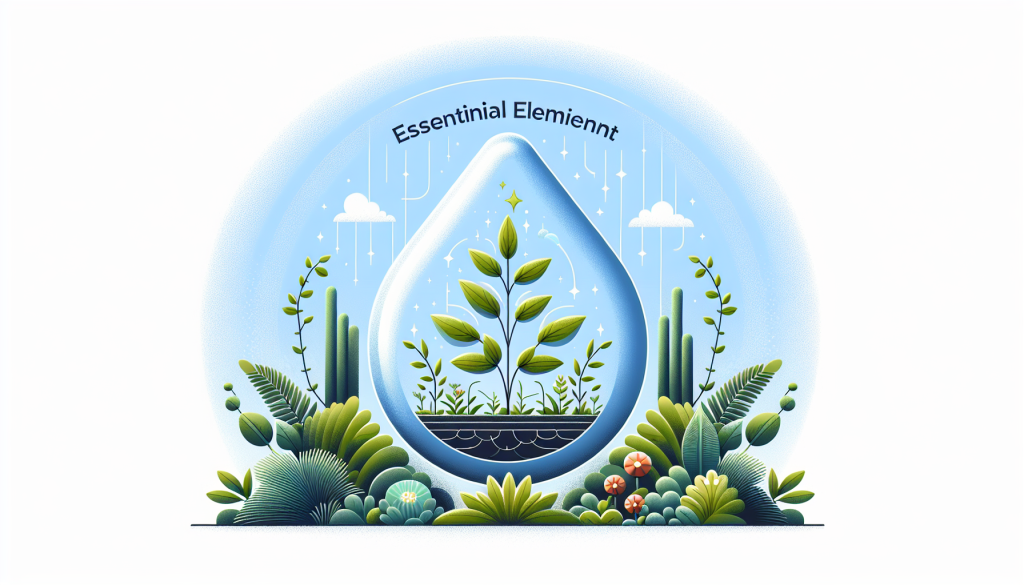
Plant Growth Regulators
Types of Plant Growth Regulators
Plant growth regulators (PGRs) are substances that influence plant growth and development, often used in commercial horticulture and agriculture. PGRs can be naturally occurring or synthetically produced and have various effects, including regulating plant height, promoting flower and fruit development, delaying senescence, and increasing overall plant productivity.
There are three main types of PGRs: auxins, cytokinins, and gibberellins. Auxins influence cell elongation and root development, making them commonly used for rooting cuttings or promoting lateral growth. Cytokinins promote cell division and shoot development, often used to stimulate branching or delay leaf senescence.
Gibberellins are involved in stem elongation, flowering, and fruit development. They are frequently used to increase fruit size or enhance overall plant growth. Other types of PGRs include abscisic acid (ABA), which controls seed dormancy and regulates stomatal closure, and ethylene, which plays a role in the ripening of fruit and triggering senescence.
Benefits and Risks of Using PGRs
The use of PGRs offers several benefits in agricultural and horticultural practices. They allow for precise control over plant growth and can be used to modify specific traits or characteristics. PGRs can enhance productivity, increase crop yields, and improve the overall quality of plants, including flower size, color, and fruit ripening.
However, there are also risks associated with the use of PGRs. Improper application or excessive use of PGRs can lead to detrimental effects on plant health, productivity, and even environmental contamination. It is essential to follow label instructions carefully and ensure that the specific PGR is suitable for the desired plant species and growth stage.
Moreover, the use of synthetic PGRs may have residual effects on food crops and can pose potential health risks if not used responsibly. It is advisable to consult local regulations and rely on approved PGR products to minimize any potential risks.
Applying PGRs Safely
When using PGRs, it is important to prioritize safety and take necessary precautions. Always read and follow the instructions provided by the manufacturer. Wear appropriate protective gear, such as gloves, goggles, or a mask, when handling and applying PGRs to minimize exposure to the chemicals.
Avoid applying PGRs on windy days to prevent drift and unintended exposure to nearby plants or sensitive areas. Ensure proper mixing and dilution of PGR solutions to avoid excessive concentrations that may harm plants. If in doubt, it is advisable to seek professional advice or consult with experienced growers knowledgeable about PGR applications.
By using PGRs responsibly and following recommended guidelines, the potential benefits of enhanced plant growth and improved productivity can be achieved safely and effectively.
In conclusion, there are several factors and items that can be used to make a plant grow faster. Nutrients play a vital role in providing the necessary energy and building blocks for plant growth. Water is crucial for various physiological processes and must be applied appropriately to prevent overwatering or underwatering. Light is essential for photosynthesis, and providing the right type, intensity, and duration of light is necessary for optimal growth. Temperature affects plant growth, and maintaining an ideal temperature range is crucial. Soil composition, pH, and fertility greatly influence plant health and growth. Pruning, companion planting, mulching, and the use of plant growth regulators can also contribute to faster plant growth when done correctly. By understanding and implementing these strategies, you can help your plants thrive and reach their full potential.


